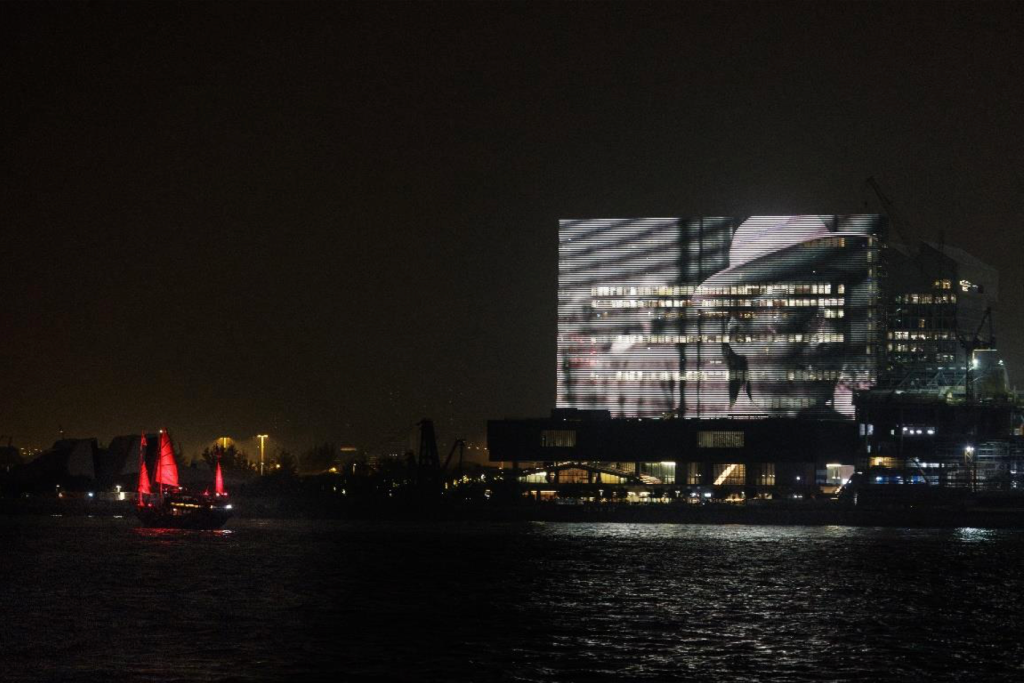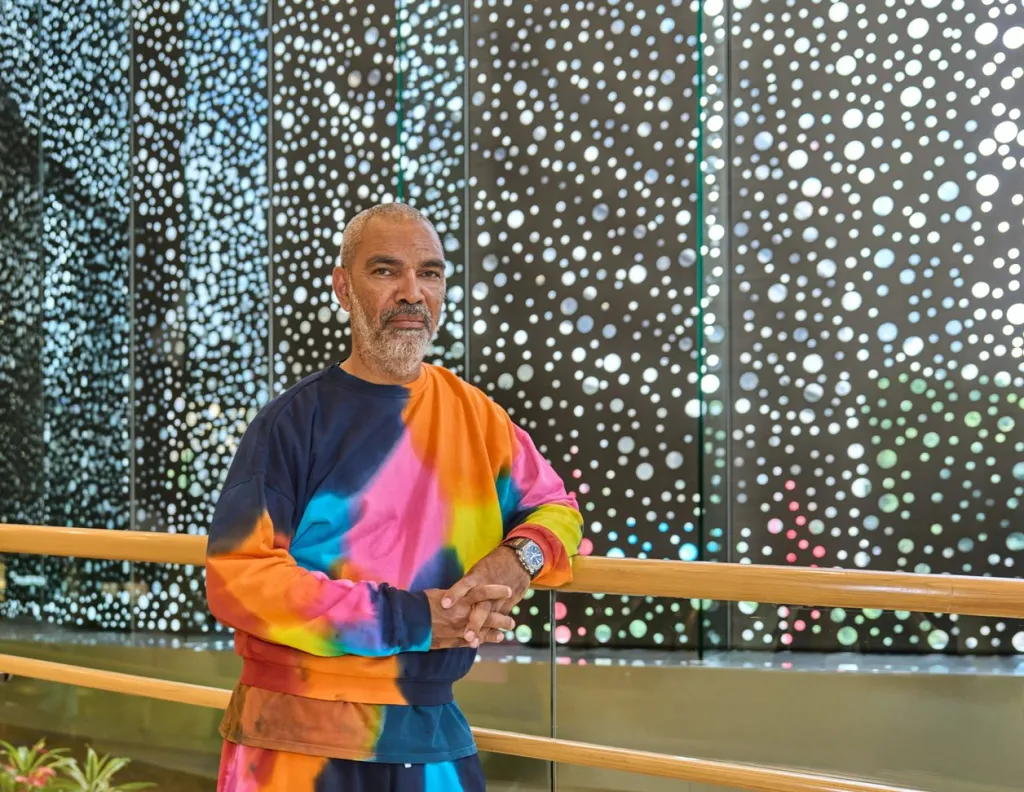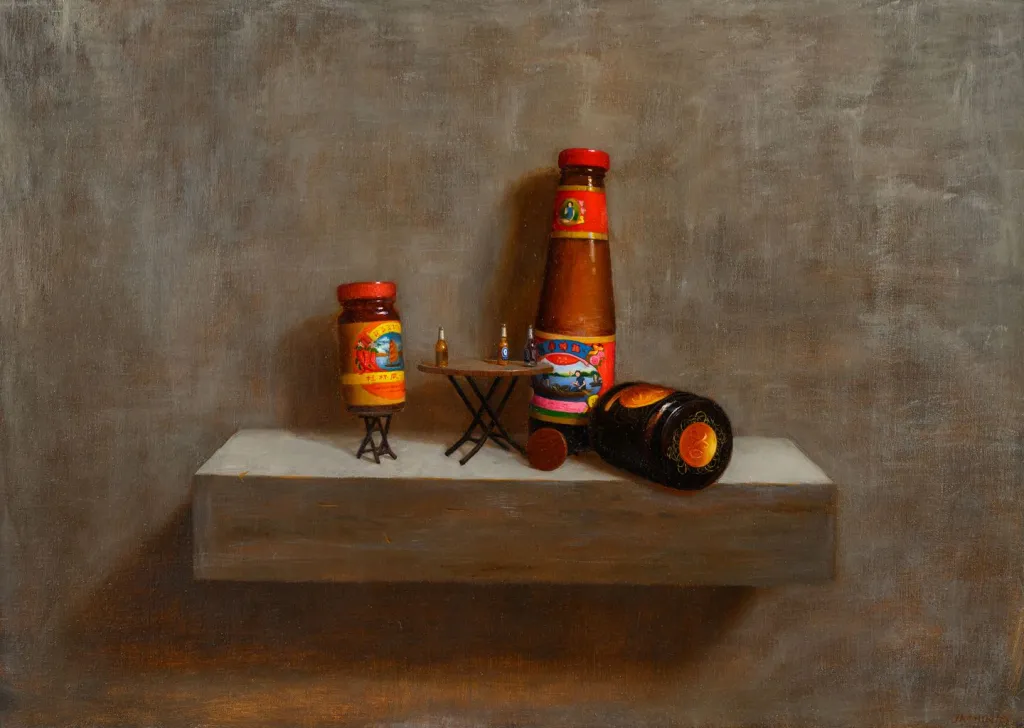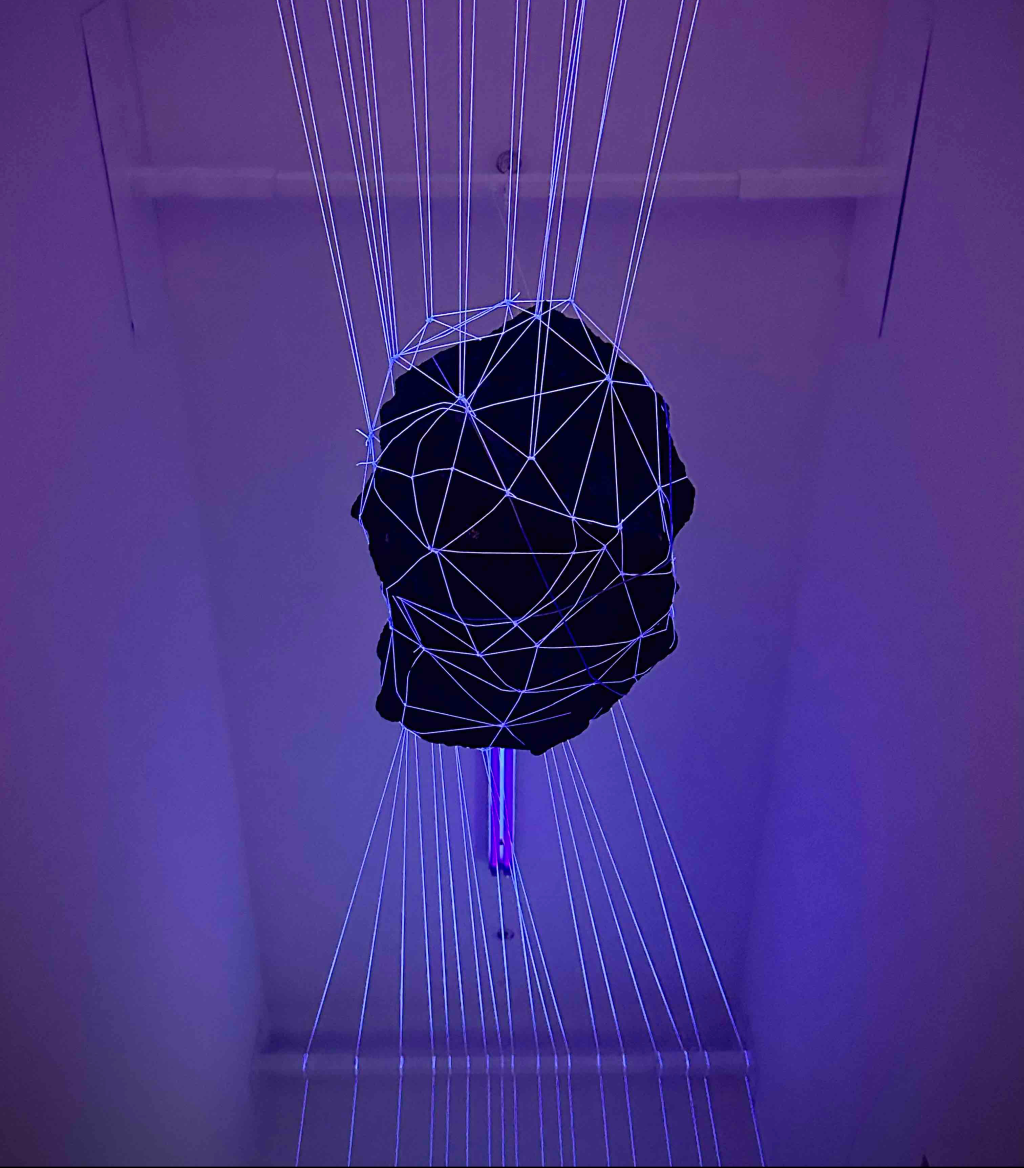
These last few months in Hong Kong, filled with memorable cultural events and art installations, have certainly been lively. We’ve had the Inter Miami Messi football match soap opera (where the star footballer did not participate, inspiring the wrath of mainland China and Hong Kong); an LED white rose installation that drew public ire for resembling a funeral hall display; and a controversial HK$7.8million (USD$1m) installation—funded by the government’s Mega Arts and Cultural Events fund— of heart-shaped balloons by British designer Anya Hindmarch, dotted around the city. (The pricetag, and installation, raised eyebrows when it was reported that Hindmarch leases retail space in the K11 Musea mall founded by the Mega Arts and Cultural Events chairman, New World Development property scion, Adrian Cheng.)
Following on from this binge-worthy drama, we reverted back to our annual programming of art, culture, entertainment and luxury brand collaborations as we once again welcomed the Art Basel Hong Kong art fair, which returned to the city in the last week of March. And with it its itinerant flock of art world denizens, collectors, curators, artists and moneyed flâneurs.

However, this year’s edition of the fair also came with its share of baggage and controversy. In September last year, a former president of the Hong Kong chapter of the International Association of Art Critics, Eric Wear, published an open letter calling on galleries to boycott Art Basel’s 2024 edition, and proposed that Art Basel withdraw from Hong Kong and move all their activities abroad. Wear wrote, ‘Censorship should be rare, with debated safeguards, and never used to support oppressive governments or erase collective memories’ and ‘Unfortunately, this is not the present situation in Hong Kong.’ Although a divisive topic, calling for a boycott on art or cultural events, which is meant to punish and isolate the country in question, would disproportionately punish its creatives, keeping works away from a wider international audience, denying many artists, and art professionals, commercial opportunities (and a livelihood), and punish the art-loving public. Instead of cultural exchange and a plurality of voices, we get cultural siloing and a reflection of international political antagonisms.
…and anyway, according to the Art Basel and UBS art market report, China’s (which includes Hong Kong), share of the art market in 2023 rose to 19%, making it second largest after the US. This is despite data from the Artnet Price Database showing that the total fine art sales in Hong Kong in 2023 totalled $1.27 billion, down by nearly six-percent from 2022’s $1.35 billion, and nearly 30 percent less from 2021’s peak at $1.8 billion. Reflecting ongoing confidence in the city’s art market, Christie’s will open their 50,000-square-foot Asia Pacific headquarters at Zaha Hadid designed The Henderson building in September, while Sotheby’s will open a 24,000-square-foot space at Landmark Chater House building in July. At the end of the day folks, the art ‘industry’— with its concomitant auction houses, galleries and fairs— is a money-making biz, and if people are buying, the show will go on. The art fair also received HK$15m ($1.9m) in funding from the government’s mega arts and cultural events fund, so that doesn’t hurt either.

This year’s Art Basel edition presented 242 galleries from 40 countries, with 65 more exhibitors participating compared to last year’s—which, coming straight outta Covid, is a bar so low it’s practically a trot pole—but it was also the highest since pre-Covid 2019. Sales were notably slower, reflecting a weaker Chinese economy, as well as high interest rates, inflation and international political instability that is affecting the global market. At a Baer Faxt art market panel later that week, art advisor Josh Baer, observed that ‘the speed has changed. Art fairs used to give you this false sense of urgency… you either raise your hand now or it’s gone. The pendulum has swung from seller to buyer.’ One Hong Kong collector also noted another difference: ‘You get treated like a human now when you talk to the gallerist. Before they wouldn’t even look at you if they thought you weren’t significant enough. Yesterday I got a polite follow-up email after expressing interest in a work … Do you think I should ask for a discount?’ ‘I heard people just point blank asking for 20% discounts,’ another German art world fixture remarked.
A Bloomberg article published in February noted how ‘an exodus of locals and expatriates in recent years— mostly well-paid white-collar workers—has weakened the city’s collective spending power… as inflation bites and the economy slows’. This was evident at the fair’s VIP preview days where one Australian gallerist commented, ‘The biggest change is the expat bankers spending their money on art after a few drinks. There weren’t any.’ There was, however, a presence of regional collectors from Taiwan, Indonesia, Philippines and China, as well as a good presence of leading patrons and representatives from international museums like the Art Gallery of New South Wales, Sydney; Centre Pompidou, Paris; Palais de Tokyo, Paris; Tate, London; The Metropolitan Museum of Art, New York; Museum of Modern Art (MoMA), New York; and Museum MACAN, Jakarta, amongst others.

Despite a slowing economy there were reportedly some notable (very, very expensive) art sales made, including a $9 million Willem de Kooning painting (Untitled III, 986); a Philip Guston painting (The Desire, 1978) for U.S. $8.5 million and a $850,000 Pat Steir painting (9 x 7, D, 2022) at Hauser & Wirth; a Tony Cragg sculpture (Incident Solo, 2023) for $780,000 at Thaddaeus Ropac; and at Sprüth Magers a $2+ million painting (Constructed Female Portrait, 2024) by George Condo, who dominated the market about six years ago. A lot more activity was reported at the lower end of the price spectrum (for the art market) with works priced $100,000 or less faring particularly well.
Away from these big-name galleries and usual headline-grabbing artists at the fair, the quieter third floor of the Exhibition and Convention Centre had a slew of artists, modern and contemporary, whose works caught my attention. Dublin’s Kerlin Gallery presented a standout booth with strong works by Irish artist Ailbhe Ni Bhriain, who showed a beautiful, large tapestry of computer-generated imagery and collage (Interval V, 2023), as well as cast bronze sculptures by Irish artist Dorothy Cross, and a gorgeous monochromatic abstract painting on canvas by Chinese artist Zhou Li (Night Landscape of Nowhere: Water and Dreams No1, 2024) that was fizzing with movement and light.
Sies + Höke, brought along an eye-catching, modernist-inspired, geometric, black-and-white, glazed ceramic tile and steel wall installation (Untitled, 2023) by Berlin-based Claudia Wieser. And Paris and Barcelona-based Galerie Mayoral presented a museum-worthy 2.5m x 6m mixed media on wood painting, Duat (1994) by late Spanish artist, Antoni Tàpies, along with a smaller, equally impressive, black painting by the artist. Hong Kong’s Empty Gallery exhibited a series of untitled black and white photographs by Taro Matushio taken nearly 20 years ago capturing queer fetish and BDSM subcultures. While quieter, contemplative works could be found at √K Contemporary from Tokyo who put together a booth dedicated to the work of avant-garde calligraphy pioneer, Nankoku Hidai, an artist whose minimalist and abstracted lines of calligraphy liberated the art form from the category of literature.

In Encounters, Art Basel’s large scale installation section curated by Aussie Alexie Glass-Kantor, Sydney gallery Sullivan + Strumpf presented Australian First Nations artist Naminapu Maymuru-White’s Larrakitj Forest (2024), an installation of ceremonial poles painted in black, white and grey ochres, depicting the Milky Way. Another Encounters artist connecting with themes of cosmos was First Nations artist Daniel Boyd, whose large-scale site-specific installation, Doan (2024), in Pacific Place mall —consisting of a moving image, reflective floor surface and window treatment— recalled constellations.
The passing of a new domestic national security law under Article 23 of the Basic Law (the city’s mini-constitution), which made sedition, treason and sabotage punishable by up to life in prison, took place the week before Hong Kong Art Week, making for some nervous panel discussions and art interviews. On the Monday of art week, Levy Gorvy Dayan Wei and Lehmann Maupin hosted a breakfast and panel discussion with US feminist artist, Marilyn Minter. The veteran artist regaled attendees with colourful anecdotes and an overview of her more than four decades-long career, replete with early video works and slides of ahem, cum shot paintings, making more than a few attendees anxious. ‘Are we going to get into trouble for this?’ asked one museum director, sipping her tea. I mean, it’s sex, not sedition, and there seemed to be plenty of artwork inspired by the former.
Around town one of the week’s most memorable and instagrammable exhibitions could be found at Kiang Malingue’s Wanchai gallery where Hong Kong artist Wong Ping’s Anus Whisper—inspired by strip clubs and flatulence—greeted visitors with a silicone installation of an asshole stretched out across the gallery’s façade. I know a few collectors and art dealers who must have felt seen. Meanwhile local gallery PHD Group presented +852 GHOST-JPG, a multimedia exhibition by Hong Kong artist, Wong Kit Yi, which fused the paranormal with audience participation karaoke; Trevor Yeung’s solo exhibition at Para Site evoked the gay cruising grounds of London’s Hampstead Heath; and Blindspot Gallery presented an exhibition of Chinese artist Xiyadie’s colourful paper-cuts which engaged with queer identity and Chinese folklore.

With the world in political circus, economic rollercoaster, and general wtf mode, it’s no wonder many art buyers were more interested in popping champagne corks than opening their wallets. Name dropping parties and people was the name of the game, and economic or political concerns did nothing to quell status anxiety, ever-present where money is concerned. As the Euro art fair-hopper, name-dropper channeling Truman Capote—who repeatedly listed off all the parties to which he was invited— knew, you’re only as relevant as the last party you threw/attended or your last Instagram story from the VIP whatever. In a world of uncertainty and chaos, it’s comforting to know some things never change, and there are some constants to cling to, like a barnacle to a sinking ship.
The week’s festivities were preceded with aforementioned property scion, art collector, and philanthropist, Adrian Cheng, throwing a lavish party at the Rosewood Hotel, this time The Children’s Ball with Russian supermodel, Natalia Vodianova Arnault, dedicated to saving the children (Sudanese? Syrian? Afghan? Ukrainian? Gazan? Children of celebrities?). Another grand soiree presented by the Serpentine followed on Monday at the Rosewood Hotel, featuring a performance by English pop star Sophie Ellis-Bextor (now enjoying a fame revival after Saltburn), and was attended by the usual local society habitués for whom a big bash was enough to declare, yet again, that ‘Hong Kong is back.’ Apparently, all we needed to rejuvenate Hong Kong post-Covid was more parties for the city’s elites.

M+, part of the West Kowloon Cultural District which is set to run out of its approximately USD$2.75 billion in government funding by March 2025, also threw a party to kick off the week, where the ever-ubiquitous local artist, Frog King, presented a performance. Many guests left early, flooding in to the nearby Peninsula Hotel party and embracing diversity as they rubbed shoulders with Hong Kong’s country club set. ‘The food and booze are much better here,’ noted a couple of guests. The Peninsula delivered the most generous feast of the week as the hotel opened its doors to its various restaurants to feed the art world’s hungry and entice those from neighbouring parties to drop by and dip into the raclette and raid the sushi bar.
There was hotel art too, including a glittering pile of crushed up CD’s and something resembling a modern baptismal fountain by Lachlan Turczan, around which guests waited for something…anything…. a performance? Respite came in the form of a female guest who reached in beatifically with both hands as other guests watched expectantly. ‘I just had to wash the seafood smell off my hands,’ she was overheard explaining matter-of-factly to her friend.

An Alt-Basel event, intended to provide an alternative cultural experience to the commerce-filled art week with a showcase of Hong Kong talent, was held at a rooftop bar in Central on the Tuesday. It saw the swift exodus of all invited members of the press after the organizer got on stage and told them to ‘Get the f#ck out!’ for daring to chit-chat during the five-hour long programme of drag, cabaret, live performances and panel discussions on Hong Kong nightlife. The evening promised an alternative cultural experience and well, it delivered. The last time I saw journos clear out a room so quickly was at an art exhibition preview in Abu Dhabi several years ago when we were informed no alcohol would be served.
Speaking of sobriety, there was a mid-week artist’s party thrown by Swire Properties and the V&A Museum at The Double by 1880, where a testicular-looking trio of crochet sculptures by Portuguese artist, Joana Vasconcelos, were suspended from the ceiling. I was warned by several Aussie guests (because we always gravitate to each other when we hear those drawn-out vowels), ‘Mate, don’t drink the red. It’s goon’ (box wine). It was, in fact, from a bottle, but we’re known to drink practically anything with no fuss, so I heeded the warning. Abstemious and hitting my socialising quota for the day, I watched the evening wind down as a bunch of Hong Kong party fixtures made a big line for Dragon-I nightclub for yet another party (this time for LACMA) to schvitz and gurn the night away in the toilet queue. Old habits die hard, I guess.
With the fair week scheduled just a few days before the Easter holidays, unsurprisingly most visitors headed off to Thailand or Bali before the weekend to unwind after a stressful and busy week of art, partying and schmoozing. Re-energized, rejuvenated and tan they are now charged up for the Venice Biennale where once again the art world will fly in from around the world and descend upon the sinking city to engage with works of art that ask critical questions about foreigners and migration (this year’s biennale is titled Foreigners Everywhere), express concern over climate change, and casually write off eye-watering Aperol spritz bills as work expenses. And then the hamster wheel will spin off towards yet more dinner parties and art fairs—Brussels, Taipei, New York, Basel, Tokyo, London, Paris…





You must be logged in to post a comment.